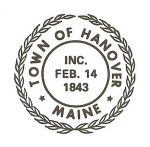Committed To Becoming More Age-Friendly
Hanover United States of America
Nathaniel Segar who came from Newton, Massachusetts, first settled the area that is now Hanover in 1774 (The Sunfower Farm). He served in the American Revolution, returned to Hanover in 1780, was captured by Indians and taken to Canada where the British held him for a year. Other early settlers : Jonathan Bean, Jesse Duston, and Moses and Stephen Bartlett, were along the Androscoggin River in the area that was part of Bethel at that time. Phineas Howard from Temple, New Hampshire, purchased an area bounded by Bethel, Newry and Rumford and including Howard’s Pond in 1792. Farmlands were cleared and homes built along the hillsides. A sawmill was established in 1796 at the pond’s outlet. The area was known as Howard’s Gore. On February 14, 1843, Howard’s Gore combined with a portion of Bethel that was north of the Androscoggin River and became the Town of Hanover. The area’s economy was developing with the construction of mills along Howard Pond Stream and farming along the Androscoggin intervales. Waterpower mills were built along the outlet stream from Howard Pond to the Androscoggin River. A canal and waterway was developed to supply power to mills in the area near today’s Mooselook Lane and 1,300 feet downstream. Over time 12 mills were located along the stream producing products. Ground grain, lumber, carded woolens and the tanned and curried hides and skins were produced along with furniture and dowels. By the mid 1950’s the economy of the area had again shifted with jobs located in more central locations. The last Hanover mill closed in the early 1950’s. With roads improving more people found work in the larger surrounding communities. Shopping trends were toward larger communities. Many of the fields and farmlands became overgrown with brush and trees. That era was generally a non-growth period in Hanover. Few new homes were built and the population remained about the same. More recently, Hanover is experiencing home and vacation property development at a more rapid pace. The small town is receiving more interest within the greater area as development in our neighboring larger towns is spreading into this community. More houses were built in Hanover in the most recent 10 years than in the previous 50 years.
Hanover is a remote, rural town with a population of 238. Accordingly, it is heavily dependent on the services provided by nearby communities. The three public buildings in Hanover are accessible to the disabled and elderly population. It is anticipated that Hanover will draw upon the resources available through the already active Bethel area Age-Friendly Community Initiative, under the auspices of AARP’s Network of Age-Friendly States and Communities, to satisfy the needs of Hanover’s aging population.


